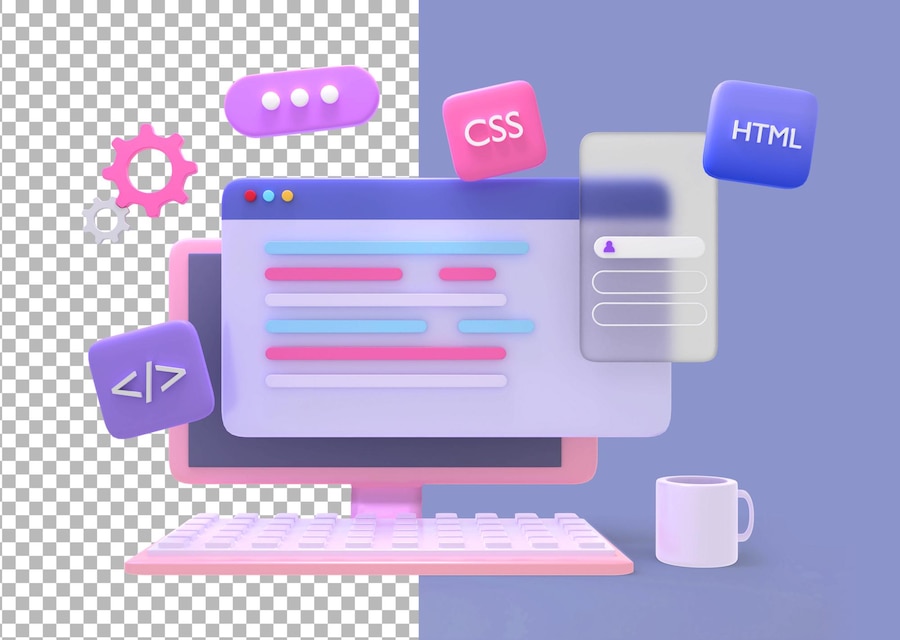As businesses expand globally, the demand for multilingual websites has skyrocketed. A website that can cater to a diverse audience is no longer just an option—it’s essential for businesses looking to tap into international markets. When it comes to developing a multi-language site, many website owners wonder how web design companies approach the task. After all, designing and developing a site that functions seamlessly in multiple languages requires a unique approach that goes beyond simple translation.
If you’re planning to expand your reach with a multi-language website, understanding how web design professionals handle such projects will help you make informed decisions about the design, development, and functionality of your site. Here’s a comprehensive guide on how a web design company typically approaches the creation of multi-language websites.
Identifying the Purpose and Audience
The first step in any web design project, especially for a multi-language website, is understanding the business’s goals and target audience. Before diving into the technical aspects, the design company will take time to:
Evaluate the Target Market: Is the goal to appeal to customers in specific regions or countries? Identifying the locations and cultures you are targeting is crucial for tailoring the content and functionality of your website.
Understand the User Experience (UX): Different languages often come with distinct user behavior and cultural nuances. A web design company will focus on how users in different regions interact with websites and adjust the layout and content accordingly. For example, the reading direction (left to right vs. right to left), color preferences, and even typography choices can impact user experience.
Choosing the Right Approach to Multi-language Implementation
Web design companies can take various approaches when implementing a multi-language website. The choice depends on factors such as the target market, content structure, and long-term goals. The two primary approaches include:
Subdomains or Subdirectories
A web design company might choose to create separate subdomains (e.g., es.yourwebsite.com for Spanish) or subdirectories (e.g., yourwebsite.com/es for Spanish) for each language. Both options are SEO-friendly, but each has its advantages and considerations.
Subdomains: Ideal if you want to treat each language version as an independent site. This might be suitable for targeting specific countries or regions with distinct content and design elements.
Subdirectories: More straightforward to manage and often preferred for smaller websites. This option keeps all the content under one domain, which can be easier for SEO and maintenance.
Translation and Content Management
A key part of a multi-language site is translating the content accurately. A web design company will decide whether to use automatic translation tools or hire professional translators. Manual translation is typically preferred to ensure the message is culturally relevant and precise.
Some companies may also use a content management system (CMS) that allows easy management of multi-language content. These systems enable the website owner to add, update, or remove content in multiple languages from a single platform, simplifying the process of maintaining a multilingual site.
Designing for Multiple Languages and Cultures
Designing for a multi-language website requires special attention to how the layout, visuals, and content appear across different languages. This is where expertise in design plays a significant role. Some of the key design considerations include:
Text Expansion and Contraction: Languages differ in the amount of space they require for the same content. For example, translating text from English to German or Russian often results in longer words or phrases. A skilled web design company ensures the website’s layout can accommodate such variations without disrupting the design.
Right-to-Left (RTL) Languages: Arabic, Hebrew, and other RTL languages need to be designed with a mirrored layout. Web design companies familiar with these nuances ensure that the content, navigation, and buttons are flipped correctly for a seamless user experience.
Localization of Images and Icons: Icons and images may carry different meanings across cultures. A web design company will ensure that images are culturally appropriate for each target audience. This might include changing images of food, clothing, or even gestures to reflect the local culture.
Responsive Design: The design must adapt to different devices and screen sizes, especially when serving a global audience. A responsive design ensures that users on mobile, tablet, or desktop devices enjoy a smooth experience regardless of location or language.
Implementing SEO Strategies for Multi-language Sites
SEO (Search Engine Optimization) plays a vital role in driving traffic to a website, especially when you’re catering to a multilingual audience. A web design company needs to consider several factors to ensure that your site ranks well in search engines across different languages:
Hreflang Tags: These tags tell search engines which language version of a page should be displayed based on the user’s location or language preference. Proper implementation of hreflang tags ensures that the right version of the page is shown to the right audience, preventing content duplication issues and improving search engine rankings.
Keyword Research for Different Languages: Keywords in one language may not directly translate to the same search intent in another language. A web design company will perform keyword research specific to each language and market. For example, the way users search for products or services in English may differ from how Spanish-speaking users search in Spain or Mexico.
Localized Content: Simply translating text isn’t enough for SEO; content must also be localized to include region-specific keywords and references. This ensures that the website appears relevant in local search results.
Multi-language SEO Plugins: Many content management systems have plugins that assist in managing SEO for multi-language websites. These tools help manage metadata, titles, and descriptions in multiple languages, which is essential for proper indexing by search engines.
Managing the Technical Aspects of Multi-language Sites
The technical foundation of a multi-language website is just as important as the design and content. A web design company will consider the following:
Website Structure: The structure should be intuitive for both users and search engines. The web design company ensures that the multi-language setup is easy to navigate and doesn’t confuse search engine crawlers. A clear URL structure, proper redirects, and effective navigation are crucial.
Content Management Systems (CMS): Platforms like WordPress, Drupal, or Joomla often have built-in features or plugins that make multi-language site management easier. Your web design company will work with your CMS to ensure that the content can be updated and managed in multiple languages without a hitch.
Testing and Quality Assurance: A multi-language site needs thorough testing to ensure everything works as expected. This includes checking language switchers, ensuring all content appears correctly, verifying SEO elements, and making sure the site loads quickly across different regions.
Ensuring Consistent Branding Across Languages
Consistency in branding is vital for global businesses. A web design company will make sure that your brand’s voice and identity remain consistent across all languages. This includes:
Logo and Color Scheme: While some cultural differences may influence color preferences, most global websites stick to a consistent color scheme to maintain brand recognition. The web design company ensures that the colors, fonts, and logo are used appropriately across all language versions.
Tone and Messaging: The tone of the content should align with your brand’s values, no matter the language. While humor or casual language might work in one language, it may not translate well into another. The web design company will work with translators or localization experts to adapt the messaging accordingly.
Support and Maintenance for Multi-language Websites
Once your multi-language website is live, ongoing support and maintenance are crucial. A web design company will typically offer:
Content Updates: As your business grows, you may need to add new languages or update existing ones. The web design company can handle the addition of new languages or refresh content in the existing ones.
Performance Monitoring: With an international audience, website performance is essential. Your web design company will monitor the site’s load times and user experience in various regions to ensure optimal performance.
Security: A multi-language website is a significant investment, and security is paramount. Your web design company will ensure that all language versions are secure, protecting your website from threats that could harm your brand’s reputation.
Conclusion
Creating a multi-language website involves much more than just translating text. It requires a deep understanding of different cultures, languages, and user experiences, all while ensuring that the website’s design and functionality work seamlessly across regions. When choosing a website design company for your multilingual site, make sure they have the expertise to handle the unique challenges of such a project.
If you’re considering Website Design and Development Packages, choosing a web design company with experience in multi-language sites can help you navigate the complexities of this process. By incorporating the best practices outlined here, your business can successfully reach and engage a global audience, driving growth and expanding your brand’s presence internationally.





